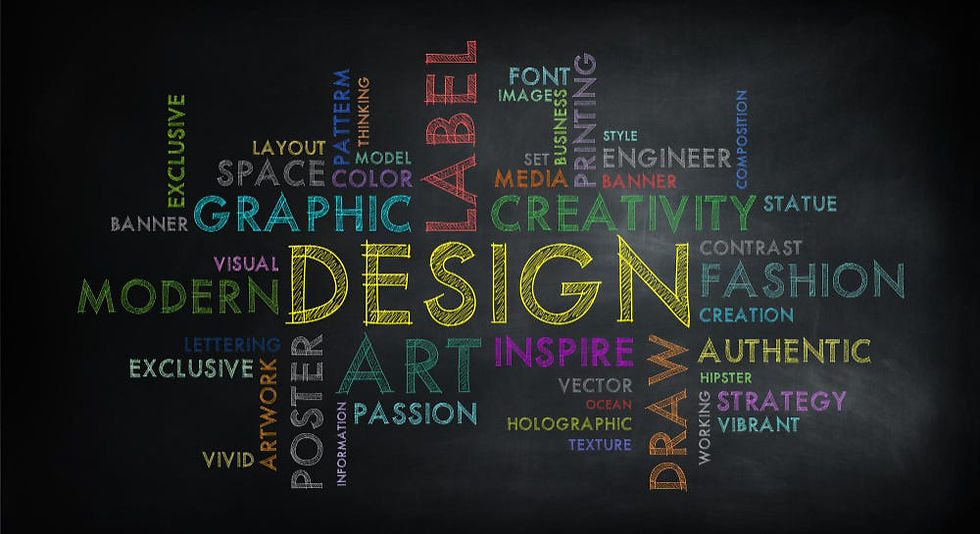Graphic Designing
- Mashood Aamir
- Oct 8, 2024
- 5 min read
The Art and Science of Graphic Design: A Comprehensive Exploration

Graphic design is an evolving field that combines creativity with technical skill to visually communicate ideas, messages, and stories. As a cornerstone of branding, advertising, digital media, and print, graphic design plays a pivotal role in shaping our modern visual culture. From logos and websites to billboards and social media content, graphic designers are responsible for creating compelling visuals that capture attention, inform, and persuade. This article delves into the essence of graphic design, its history, its role in modern media, essential skills, and future trends.
The History of Graphic Design
Graphic design, as we understand it today, has a long and complex history. Although humans have been using symbols and images to communicate for millennia—from cave paintings to hieroglyphics—the modern profession of graphic design emerged in the late 19th and early 20th centuries. With the invention of the printing press in the 15th century, visual communication began to take shape in the form of typography, allowing for mass production of printed materials. However, it wasn’t until the early 1900s, with the rise of the advertising industry and technological advancements in print and media, that graphic design truly began to solidify as a profession.
One of the earliest landmarks in graphic design history was the Bauhaus movement in Germany (1919–1933), which emphasized the relationship between art and industry, advocating for functional design that could be mass-produced. The movement was rooted in the idea that form should follow function—a concept that remains central to design philosophy today.
Another major milestone came with the advent of digital design tools in the late 20th century. Programs like Adobe Photoshop, Illustrator, and InDesign revolutionized how designers worked, enabling them to create intricate designs with greater ease and flexibility. This period saw the rise of the graphic designer as a key player in industries like advertising, marketing, and web development.
The Role of Graphic Design in Modern Media:

In today's visually driven world, graphic design has become an integral part of almost every aspect of life. Its role extends far beyond mere aesthetics; it serves as a communication tool that helps organizations convey their brand, values, and messages to the audience.
1. Branding and Identity Design:
At the core of any successful brand is a strong visual identity. This includes logos, typography, color schemes, and other visual elements that define a company's image. Graphic designers work closely with businesses to create memorable and cohesive identities that resonate with consumers. A well-designed logo, for example, can become a symbol of trust and reliability, as seen with iconic logos like Apple's bitten apple or Nike's swoosh.
2. Advertising and Marketing:
Graphic design is crucial in crafting advertisements that grab attention and generate interest. Whether it's a banner ad on a website, a magazine spread, or a television commercial, design choices like layout, typography, and color impact how the message is received by the audience. In the competitive world of marketing, a well-designed campaign can make the difference between success and obscurity.
3. Web and User Interface (UI) Design:
In the digital age, websites and mobile apps are often the first point of contact between a business and its customers. Graphic designers specializing in UI design focus on creating user-friendly and aesthetically pleasing interfaces. This involves not only making the website or app visually appealing but also ensuring that it is easy to navigate and provides a positive user experience.
4. Print Media:
Though digital media has taken center stage, print design remains a vital aspect of the industry. Brochures, business cards, posters, magazines, and packaging design still require the hands-on expertise of graphic designers. The tactile experience of print media can leave a lasting impression, offering a personal touch that digital designs may lack.
5. Social Media and Content Creation:
Social media platforms like Instagram, Facebook, and Twitter have given rise to a new form of design—one that prioritizes engagement and shareability. Graphic designers play a critical role in creating visually engaging content, from posts to infographics, ensuring that brands maintain a strong online presence and connect with their audience in meaningful ways.
Essential Skills for Graphic Designers

Graphic design is both an art and a science. While creativity is at the heart of the profession, technical skills are equally important. Here are some of the key abilities every graphic designer should master:
1. Creativity and Conceptualization:
Graphic design is all about turning ideas into visuals. A designer needs to be able to conceptualize abstract ideas and create designs that communicate these ideas clearly and effectively.
2. Mastery of Design Software:
Programs like Adobe Photoshop, Illustrator, and InDesign are industry standards. Designers need to be proficient in these tools to manipulate images, create illustrations, and design layouts. In addition, web designers may need to be familiar with HTML, CSS, and JavaScript.
3. Typography:
The choice of fonts can make or break a design. Typography involves selecting the right fonts and arranging them in a way that enhances readability and visual appeal. Understanding font pairing, spacing, and alignment is crucial for any graphic designer.
4. Color Theory:
Colors evoke emotions and set the tone for designs. Graphic designers must understand how to use color palettes effectively, knowing how colors work together and how they affect the viewer’s perception.
5. Layout and Composition:
Arranging elements in a balanced and aesthetically pleasing way is vital. Designers need to understand the principles of alignment, spacing, proportion, and hierarchy to guide the viewer’s eye to the most important aspects of the design.
6. Problem-Solving:
Graphic design often involves solving visual problems. A client may have a complex message they need to convey, and it’s the designer's job to distill that message into something simple and visually engaging.
Emerging Trends in Graphic Design

As technology continues to evolve, so too does the field of graphic design. The future of design will likely be shaped by several emerging trends:
1. 3D Design and Animation:
With the rise of augmented reality (AR) and virtual reality (VR), 3D design is becoming more prominent. Tools like Blender and Cinema 4D are allowing designers to create more immersive and dynamic visuals. Motion graphics and animations are also gaining traction, especially in web design and advertising.
2. Sustainable and Minimalist Design:
In response to global environmental concerns, many designers are embracing minimalist and eco-friendly design principles. This includes using fewer resources in print design and opting for simpler, cleaner designs that focus on functionality.
3. Personalization:
As brands seek to connect more deeply with their audiences, personalized design is on the rise. This involves creating designs that can adapt to different user preferences, especially in digital spaces like websites and mobile apps.
4. AI and Automation:
Artificial intelligence is gradually making its way into the graphic design industry. AI tools can help automate repetitive tasks like resizing images or generating variations of a design. However, creativity remains a human endeavor, and designers will still be needed to provide the vision and direction.
Conclusion
Graphic design is a dynamic and multifaceted field that blends creativity, technology, and communication. As we move further into the digital age, the importance of good design only continues to grow. Whether it’s building a brand identity, designing a user interface, or crafting an ad campaign, graphic designers play a key role in shaping how we interact with the world. To succeed in this ever-evolving industry, designers must be adaptable, constantly learning new tools and techniques while staying true to the principles of good design. The future of graphic design is bright, filled with opportunities for innovation and creativity.




Comments